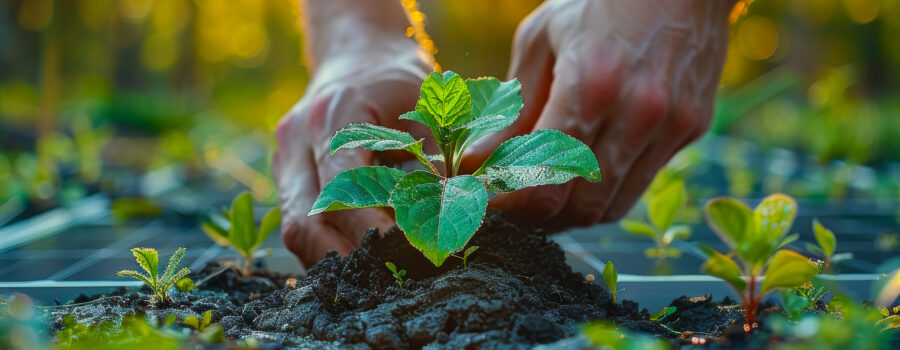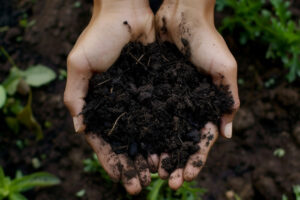Starting a food forest doesn’t have to cost a fortune. In fact, with a little creativity, you can build one using mostly free or inexpensive resources. With nature as a partner, a little can go a long way toward developing a cost-effective, abundant edible landscape.
Why Choose a Modest Approach?
Food forests are long-term investments in food security, biodiversity, and soil regeneration. While there are many high-end options for raised beds, exotic plants, and irrigation systems, a low-cost approach offers several advantages:
- More accessible for beginners
- Less risk if mistakes happen during the learning process
- Higher return on investment over time
- Promotes community connection through sharing and bartering
- Reduces waste by reusing materials that would otherwise end up in landfills
My permaculture journey was a surprise. I ended up heading down that path as more of a whim than a plan. But when the pandemic hit, and self-sufficiency became more of a priority, I embraced the permaculture lifestyle wholeheartedly. At the risk of sounding like a “permevangelist,” I’d love for everyone to be able to enjoy the benefits of an organic food forest, at any budget or level — even if it is only on an urban patio!
1. Start with a Solid Plan
Planning is free and vital to the process. A well-thought-out design can save money in the long run by avoiding costly errors.
Key planning steps:
- Observe your site for at least a few weeks — note sun patterns, slope, drainage, and wind.
- Sketch a rough map of your area and identify zones (from most used to least used areas).
- Decide on the scale of your food forest and choose plants that serve multiple purposes (edible, nitrogen-fixing, shade, pollinator-friendly).
There are many free resources out there, including this blog. Don’t skip this phase!
How to Start a Food Forest
Essential First Steps…
2. Source Free or Cheap Organic Matter
Healthy soil is the foundation of your food forest. You can build rich, fertile soil without buying expensive compost or fertilizers.
Where to Find Free Organic Materials:
- Arborist Mulch
Some tree trimming companies will drop wood chips for free, although I have found that even when we have paid to have trees removed, we had to pay a little extra to get the material chipped (one drop pictured below). Now that arborist mulch has become popular with gardeners, our local tree trimming services are able to sell their chips (and while I’ve been registered with chipdrop for years, that resource has never panned out for me here). We have paid an additional $75 to have our removed hardwood trees chipped and dropped in the back yard. If you schedule at the end of the day, you will often get a full truckload of chips. This is still a great deal! Even better, if you’re able to flag down utility trimming trucks as my husband has a few times, mulch can be had for free (we always offer at least a $20 tip for their trouble). And, if they’re working their way through the neighborhood, you can usually get more than one huge load. - Leaves
Fall leaves that neighbors bag or rake to the curb can make great mulch and compost. We have several Live Oaks in our yard that drop their trees twice a year, and floral “catkins” in the spring. These are both small and break down rather quickly (the fragile catkins break down very fast). - Grass clippings
A great source of free nitrogen, as long as it’s not treated with chemicals. - Coffee grounds
While you can ask local cafes for used grounds, it’s probably more than you would ever need. Your daily coffee grounds can be composted, or used directly on acid-loving plants like blueberries or citrus. Sprinkle at the base of plants and gently mix into the soil. Coffee grounds can deter slugs and snails, which can damage citrus leaves and fruit. Coffee grounds can help retain moisture in the soil, reducing the need for frequent watering. They can also act as a natural mulch, suppressing weed growth. - Manure
Check with local farms or stables. We live near the self-proclaimed “Horse Capital of the World®,” Ocala, Florida. Horse ranches and free manure abound. Just be sure to check that no herbicides are used where the horses graze first. If I did not have this resource, I would consider keeping rabbits for a great source of “cold” manure, that can be used without composting first. - Cardboard and newspaper
Used for sheet mulching to suppress weeds and build soil. Some gardeners fear cardboard, but I have used it with great success. Just be sure to use cardboard without printed, glossy coatings and to remove all tape, labels, and staples first. For the source most of us have plenty of, the standard black ink on Amazon boxes is vegetable-derived and harmless. (More on this in future posts…)

3. Build Soil with Sheet Mulching
Sheet mulching is a no-dig technique that turns lawn or bare ground into nutrient-rich garden beds. It mimics natural forest floors.
Basic Steps:
- Mow or flatten existing vegetation.
- Lay down cardboard or newspaper to block light.
- Add layers of organic matter (compost, leaves, mulch, straw).
- Water thoroughly.
- Let it sit for a few weeks or plant directly into it.
It’s a low-cost way to reduce weeds, retain moisture, and improve soil life.

4. Propagate Your Own Plants
Buying trees and perennials can add up quickly, but many plants can be propagated for free or very cheap.
Low-Cost Propagation Techniques:
- Cuttings: Many herbs, shrubs, and vines root easily in water or soil. Longevity spinach, Brazilian spinach, and sweet potatoes root easily and quickly. I’ve spread them as an edible ground cover all over my yard. Buy one and expand throughout the year.
- Division: Split mature plants like lemongrass, comfrey, and yarrow.
- Seeds: Save from grocery produce or trade with friends. Once you have plant material in place, save seeds, like the Roselle hibiscus (Hibiscus sabdariffa) pictured above.
- Air layering: Ideal for guava, mulberry, and other woody plants.
Join local seed swaps, plant groups, or community gardens to share and receive free plant material. Save your pineapple tops and plant things like ginger and potatoes that have begun to sprout…

5. Choose Hardy, Multi-Purpose Plants
Opt for low-maintenance plants that thrive in your climate and serve more than one role in your system.
Great Low-Cost Choices for North Central Florida:
- Pigeon pea
Nitrogen fixer, food, chop-and-drop mulch, and easy to grow from inexpensive seeds. - Sweet potato
Edible leaves and roots, great ground cover. Just find an organic potato, allow it to sprout, put the sprouts in water to root, and you’ll have potentially hundreds of slips to plant. Plant it once and you’ll always have it. - Cassava
High-calorie tuber, drought-tolerant, so easy to regrow each year from stem cuttings. - Longevity Spinach
Super fast and easy to propagate from cuttings, dies back after frost, but grows back from roots. Makes a great ground cover. - Moringa
Highly nutritious leaves, drought-tolerant
These plants are locally adapted and require fewer inputs, making them more likely to succeed without expensive fertilizers or pest control.
6. Scavenge and Reuse Building Materials
You don’t need brand-new materials to build trellises, beds, or pathways. With a bit of scavenging, you can build nearly everything you need.
Free or Cheap Building Material Sources:
- Craigslist or Facebook Marketplace (Free section)
- Habitat for Humanity ReStore
- Construction sites (ask permission for pallets or scraps)
- Old fencing or decking from neighbors
- Thrift stores or garage sales
Creative Uses:
- Pallets for compost bins or vertical planters
- Cinder blocks for raised beds or retaining walls
- Glass jars as mini greenhouses for seedlings
- Plastic bottles as drip irrigation systems
7. Use Gravity and Nature for Irrigation
Instead of installing a costly irrigation system, design your landscape to slow, sink, and spread water.
Free or Low-Cost Water Strategies:
- Swales: Shallow trenches on contour to capture runoff.
- Rain barrels: Catch roof runoff for hand watering.
- Ollas: DIY clay pot irrigation.
- Mulching: Conserves water by reducing evaporation.
A well-mulched food forest can often go weeks without supplemental watering once established.
8. Build Community Connections
Community is one of the most powerful resources in low-cost permaculture. Through sharing, bartering, and learning from others, you can grow your food forest more affordably.
Where to Connect:
- Local Facebook gardening and permaculture groups
- Neighborhood plant swaps
- Master Gardener and county extension office programs
- Freecycle and Buy Nothing groups
You might find someone giving away extra plants, tools, mulch, or even fruit trees. Don’t be afraid to ask.

9. Let Nature Do the Work
Once your food forest is planted, the most cost-effective strategy is to allow natural systems to take over.
- Let chickens or ducks manage pests.
- Use chop-and-drop mulch from plants you grow (like Mexican Sunflower).
- Encourage beneficial insects.
- Let ground covers self-spread, like the edible and nutritious Longevity Spinach (Gynura procumbens) pictured above.
- Save seeds and propagate your most successful and favorite plants.
The less you intervene (as long as you observe and support wisely), the more resilient and abundant your system becomes.
Final Thoughts
You don’t need fortune to create a thriving food forest — just some planning, resourcefulness, and local community. By leveraging free and low-cost materials, you’ll not only save money but also build a resilient system that reflects permaculture values.
Just start small, stay observant, and remember that abundance begins with intention and patience, not expense.
Copyright © 2025 Fruitful Food Forestry & Lauren Lynch. No portion of the original content on this website may be reproduced, in any language, without express written consent.
Want to Express Your Gardening Style?
Check out what we’re “petaling” …









Leave a Reply
Your email is safe with us.